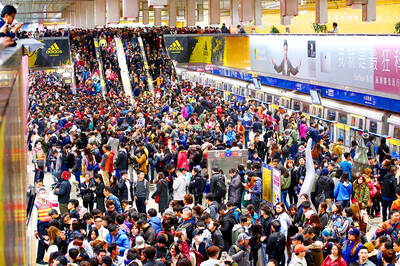Most of the 11 nations that are part of the Comprehensive and Progressive Agreement for Trans-Pacific Partnership (CPTPP) have responded positively to Taiwan’s bid to join the trade initiative, the Ministry of Foreign Affairs said yesterday.
“The responses we have received thus far are relatively positive. The Japanese government has expressed its support for Taiwan’s bid and the reactions from other member nations are not very far from it,” Department of International Cooperation and Economic Affairs Director Lee Sing-ying (李新穎) told a news conference in Taipei.
Although different nations have a different tone, most of them have reacted positively to Taipei’s bid, he added.
Following the US’ withdrawal in January last year from the Trans-Pacific Partnership, the 11 remaining countries last month concluded discussions on the new Japan-led CPTPP and are expected to sign the agreement in Chile next month.
In an effort to facilitate the nation’s bid, Lee said that several government agencies are conducting a comprehensive review of local regulations, while its overseas representative offices are gathering information on the respective pledges made by the member nations.
It takes about one year for the CPTPP to take effect and start accepting new members, which could either be as a nation or a separate customs territory, Lee said, adding that the ministry would continue to approach concerned nations and economies to garner support.
Asked about the possible China factor, Lee said that Beijing’s focus is the Regional Comprehensive Economic Partnership and it currently has no plans to join the CPTPP.

People can take the Taipei MRT free of charge if they access it at Nanjing Sanmin Station or Taipei Arena Station on the Green Line between 12am and 6am on Jan. 1, the Taipei Department of Transportation said on Friday, outlining its plans to ease crowding during New Year’s events in the capital. More than 200,000 people are expected to attend New Year’s Eve events in Taipei, with singer A-mei (張惠妹) performing at the Taipei Dome and the city government’s New Year’s Eve party at Taipei City Hall Plaza, the department said. As people have tended to use the MRT’s Blue or

Civil society groups yesterday protested outside the Legislative Yuan, decrying Chinese Nationalist Party (KMT) efforts to pass three major bills that they said would seriously harm Taiwan’s democracy, and called to oust KMT caucus whip Fu Kun-chi (傅?萁). It was the second night of the three-day “Bluebird wintertime action” protests in Taipei, with organizers announcing that 8,000 people attended. Organized by Taiwan Citizen Front, the Economic Democracy Union (EDU) and a coalition of civil groups, about 6,000 people began a demonstration in front of KMT party headquarters in Taipei on Wednesday, organizers said. For the third day, the organizers asked people to assemble

Taipei is participating in Osaka’s Festival of Lights this year, with a 3m-tall bubble tea light installation symbolizing Taiwan’s bubble tea culture. The installation is designed as a bubble tea cup and features illustrations of Taipei’s iconic landmarks, such as Taipei 101, the Red House and North Gate, as well as soup dumplings and the matchmaking deity the Old Man Under the Moon (月下老人), affectionately known as Yue Lao (月老). Taipei and Osaka have collaborated closely on tourism and culture since Taipei first participated in the festival in 2018, the Taipei City Department of Information and Tourism said. In February, Osaka represented

Taiwanese professional baseball should update sports stadiums and boost engagement to enhance fans’ experience, Chinese Professional Baseball League (CPBL) commissioner Tsai Chi-chang (蔡其昌) told the Liberty Times (sister paper of the Taipei Times) in an interview on Friday. The league has urged Farglory Group and the Taipei City Government to improve the Taipei Dome’s outdated equipment, including relatively rudimentary television and sound systems, and poor technology, he said. The Tokyo Dome has markedly better television and sound systems, despite being 30 years old, because its managers continually upgraded its equipment, Tsai said. In contrast, the Taipei Dome lacked even a room for referees